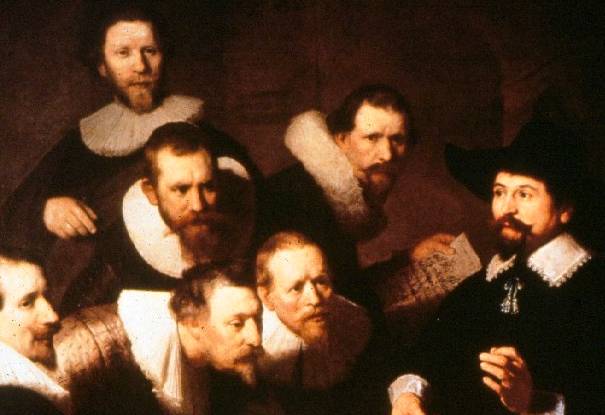|
Introduction to Peace
When Paul Harris looked for peace, he went back to the scenes that
he knew from his childhood in Vermont: the landscape without human
beings, tranquil in a state of rest and contentment. It is a scene
that has been repeated for centuries when peace was discussed. In
Western art, when we introduce human beings into the springtime
landscape, they are always at play or not working. In the Orient,
mankind is kept small in contrast to the gigantic forces of Nature
that surround their actions and shelters. In both scenes, nature is
the dynamic element in creating peace, not the Person.

When the first Rotary Club was organized, peace was seen as a
community of professionals who were instructed at luncheons by a
master lecturer and lead by leaders who knew how “service above
self” would lead to peace and goodwill. Today, under Rotary’s new
creation, the Rotary eClub, these same professionals meet on the
internet but still have a speaker and selected leaders who add
Service Without Borders to the earlier axiom of Service Above Self

Of course, each Rotary unit, the land-based luncheon clubs and the
virtual-based eClubs, recruit the best and brightest of the young
professionals who are in the immediate world that the club inhabits.
Peace may be thought of as a dance of the young or a perpetual party
where goodwill and fellowship overshadow work for the briefest of
moments. Eventually, all Rotarians know that work must and should
come and there can be a special kind of peace in that endeavor (that
service).


In today’s world, peace is sometimes thought of as the outcome of
fame and celebrity status, overlooking the work that goes behind
that accolade. Peace only comes, in this way of thinking, through
status.

With the Romantics of the 19th century, peace was only found in “far
away places with strange sounding names”. If it is here, it is too
real; over there is the only place where peace can be found, and
then, everyone knew, peace is a dream that cannot be fulfilled.
Peace is in the wilderness of human’s existence.

Peace can be seen as a force like a hurricane that will comes
upon the earth (as a unified army of termites which are being
attacked by the spiders of the world). Only through their numbers
will they win out. Peace, in this way of thinking, is a universal
form without individuality, without free will..

Peace, to most people in the world though, is a relationship between
Man, Animals, Plants, the Universe, and Elemental Forces. It is a
dance. It is continually young. It is a fellowship between people
and others, people and the earth, people and their beliefs, people
in a circle relationship with the world around us. Peace has spirit
and spirituality. It is, in the best sense, like Chagall’s I and My
Village. We see the green farmer on the right. Green because he is
close to the earth and its treasures. Blind because if you are the
earth, you do not need to see the earth. He is married to Woman,
animals and plants with an overlay of a Circle that might represent
the rotation of our earth or the binding together of forces. In the
background is the man and the woman (with the upside-down woman
pointing to the relationship in the foreground with her placement),
walking to work. In the church is a face that looks out to us, the
viewers, so that the circle is also repeated from the painting to
outside the painting where we live. In case you miss all this,
Chagall turns two houses upside down (a double arrow) to point us in
the right direction for what Peace really is. Man and woman works
with the animals, the land (plants) and each other in a harmony of
motion, in a circle of actions and commitments. On the cheek of the
animal, woman milks the goat for food. It is a pastoral community and
commitment of peace. It is an allegory and representation of a world
at peace: I AND MY VILLAGE.

A Community and Commitment of Peace:
Paul Harris wrote that no treaty or contract ever prevented a war
(achieved peace) and that only "neighborliness" created a Path to
Peace. "Neighborliness" means that I honor your right to live in
your house and you honor my right to live in mine. As long as I
extend "neighborliness" to my family (honoring each of them in body
and spirit), my home is considered a fortress and shelter against a
world that can be hostile. Our contract, from a handshake, is I will
fight to keep your freedom and you will fight to keep mine. We may
not use the same "metaphors" for this agreement but we honor the
universal principles behind our rhetoric. Our definitions of order
may vary but we both honor each other's love of our individual
order. The well-worn path to my home does not exclude a well-worn
path to yours. The simple rule is Golden. It is not the possession
of one ideology, one house in the woods. And to keep this freedom
alive, we express our collective support and our pursuit of
understanding through a liberal education. We shake hands again that
only through a liberating education can each of us learn to live in
peace together. I might teach you how I honor my extended family and
you might share your ways but we start with the knowledge that they
might not be the same. Therefore the ingredients of peace could be
expressed with these terms: neighborliness, freedom, cooperation,
understanding, education, consideration, harmony, unity and peace.
Peace is surely "imperfect beauty".
|








